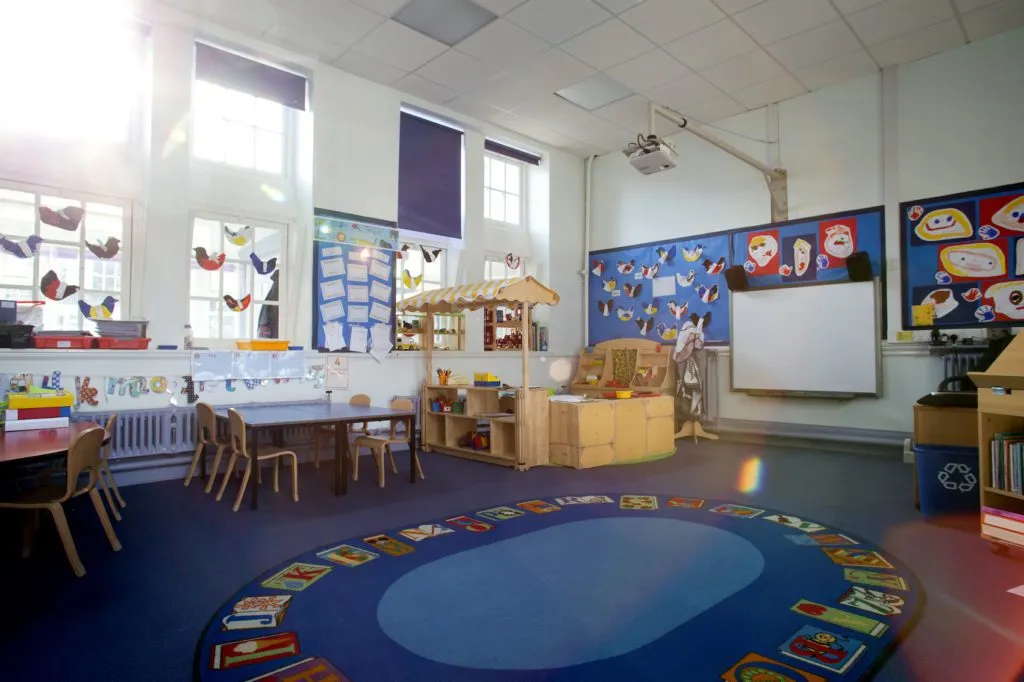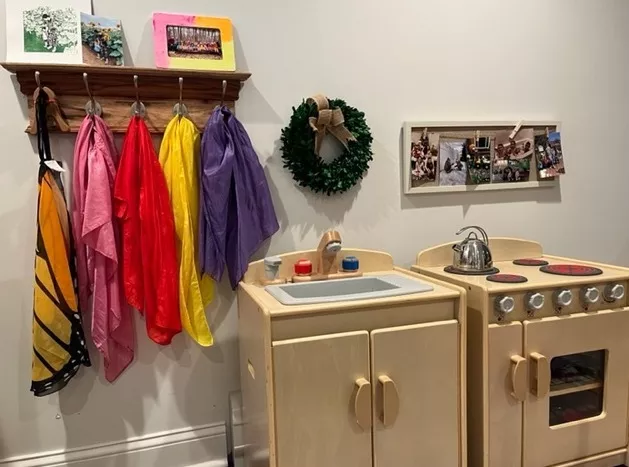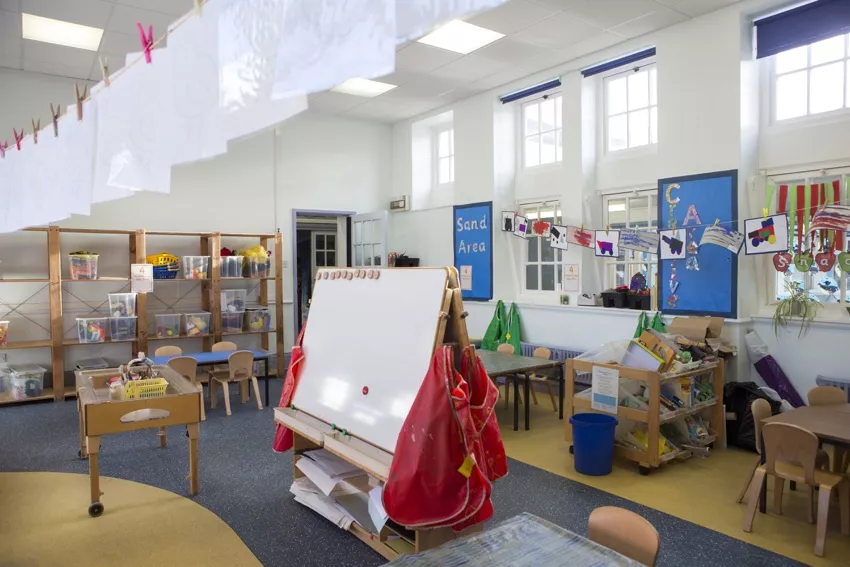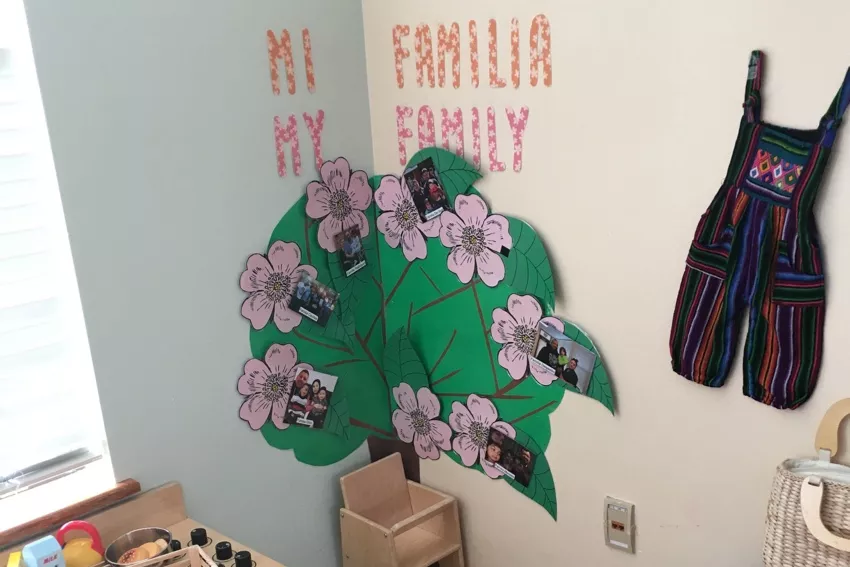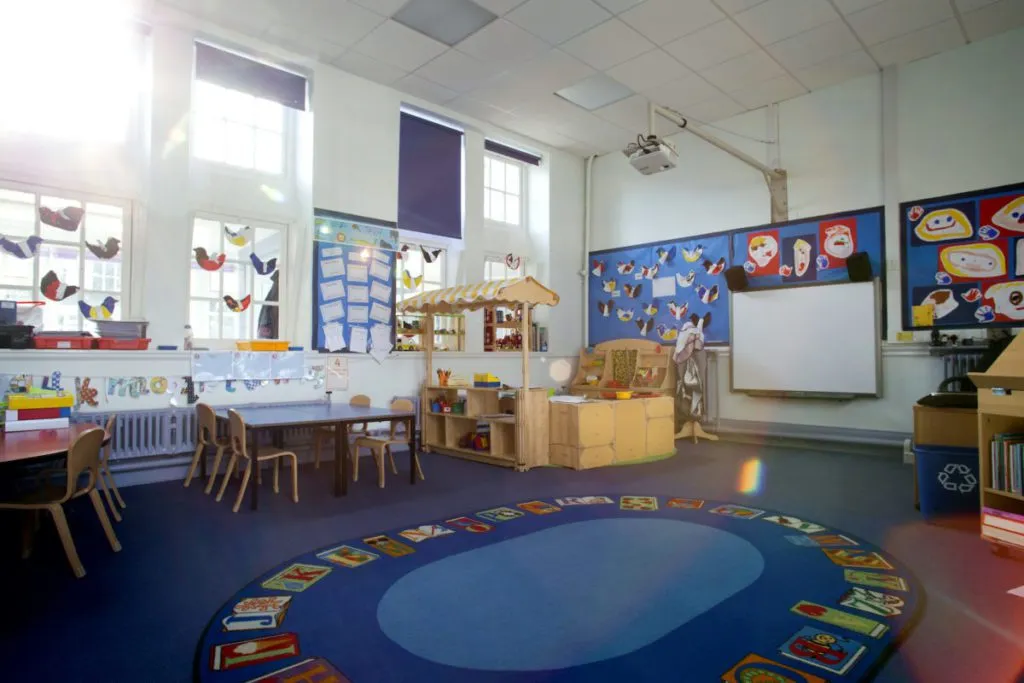The Power of Environments

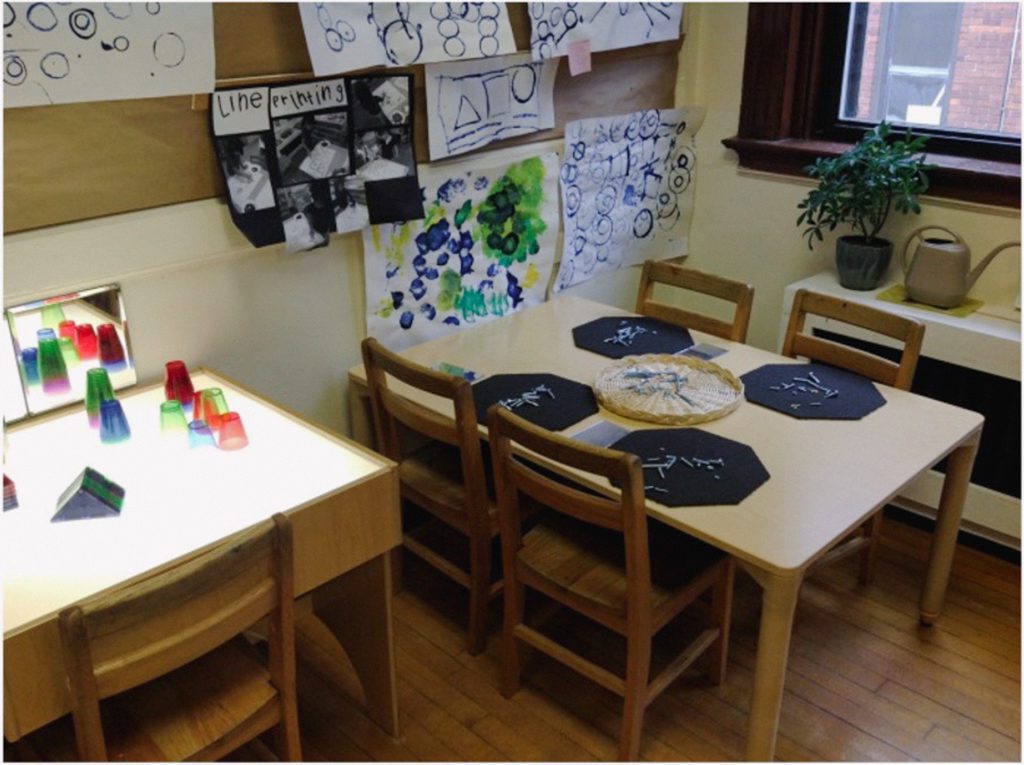
Have you ever spent time in an arcade? How about in a place of worship or a museum? If your answer is “yes,” chances are your behavior varied between the locations. Chances are also pretty good that someone didn’t need to tell you how to act in either place; the environment itself provided the clues.
The environment around us impacts how we feel and behave. The classroom environments you create have great influence on how children interact with the space and with each other. As you prepare your environment, pause to look at it through the eyes of a child. Ask yourself what messages a child might get from this classroom. Is the message one of calm or chaos? Wonder or drudgery? Belonging or conformity?
Let’s look at how classroom design can support you in creating an engaging space that reflects your learning community.
The Walls
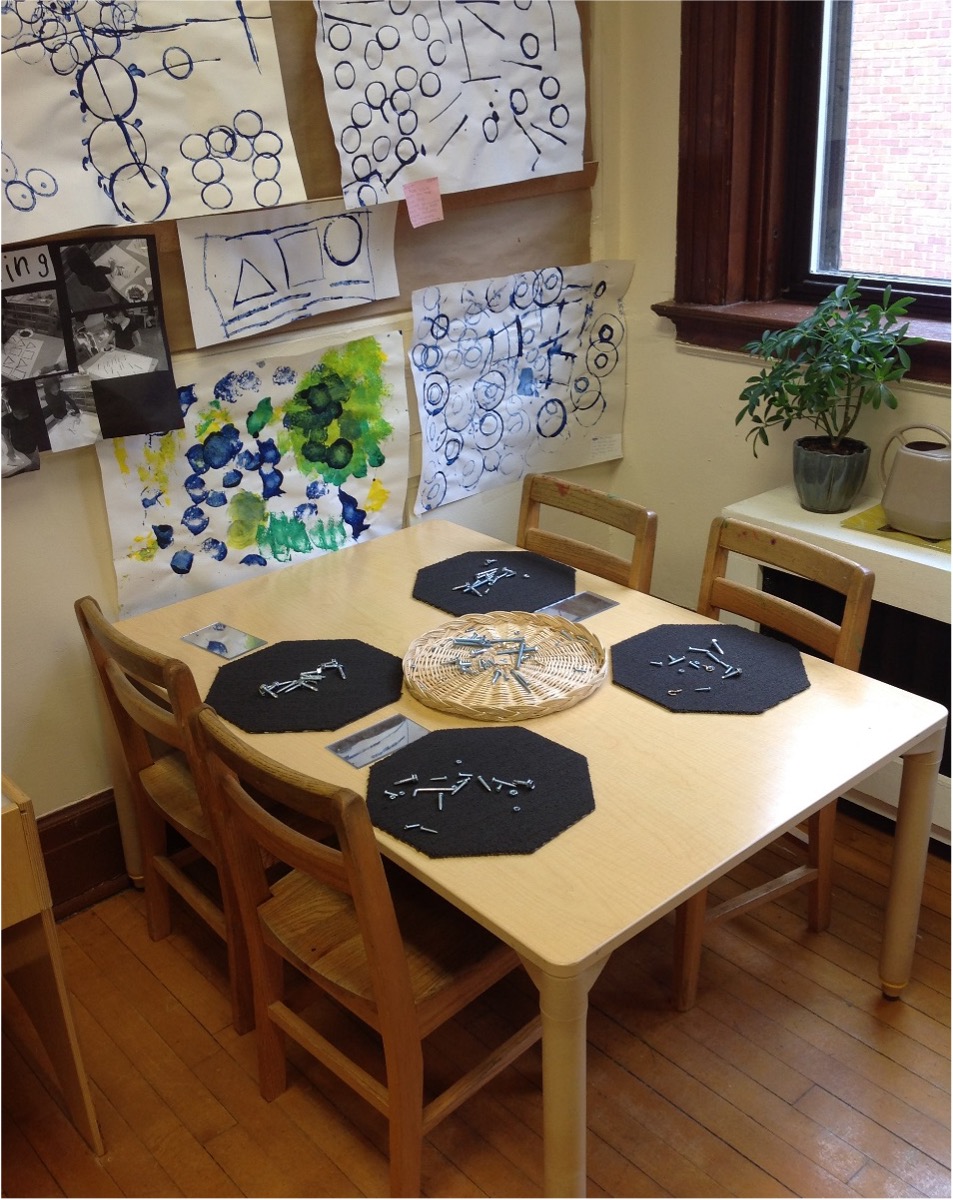 In previous blog posts, we have talked about how to create a sense of belonging in the classroom and how to work with children to shape an environment that reflects them, their families, and their interests. Intentionally designed wall space can also contribute to a sense of calm in the classroom.
In previous blog posts, we have talked about how to create a sense of belonging in the classroom and how to work with children to shape an environment that reflects them, their families, and their interests. Intentionally designed wall space can also contribute to a sense of calm in the classroom.
There is sometimes pressure to fill a classroom’s walls with myriad cute and learning-focused decorations before children even arrive. A wall that features lots of color and little blank space may seem appealing to an adult, but it can feel overwhelming to a young child. An overabundance of colors and patterns flood the senses and can contribute to a sense of chaos, as the child doesn’t know where to focus—just think of the difference between trying to think deeply in an active arcade versus a quiet library!
As you plan how to use displays on your wall space, reflect on the following four questions.
- Is it relevant? Does the display tie into a current study or class interest? A poster about the lifecycle of a butterfly may not generate much interest if it is always on a wall, but it becomes more meaningful when it is displayed as part of a study about insects.
- Is it reflective? Does it reflect the classroom’s current group of children, their families, and their interests? Can children see themselves in the classroom decor?
- Is it appropriate? Think about what children are learning and how that might relate to wall displays. For example, geographic knowledge in preschool starts with an exploration of the neighborhoods that surround children’s homes and school. A world map is not yet appropriate for their level of development and learning and just takes up space on the wall.
- Is it helpful? Most children build literacy skills as they interact with meaningful print and fall in love with engaging literature, not with an alphabet chart on the wall. Instead, considering cutting the chart’s letters into pages, turning it into a book, and placing it in the Library area. It becomes more useful as children engage with it, such as by referring to it as they record their thoughts in journals or flip through a favorite book.
When teachers are intentional about what goes on the classroom walls, the space may feel calmer, and children are more likely to notice and engage with what is there, just like in a museum.
The Space
Close your eyes for a minute and think about your favorite place to be. What feelings are evoked by that image? What are the elements in the space that feed your soul? You may not be able to recreate a waterfall, beach, or mountaintop in your classroom, but what elements can you incorporate? Think about the following four questions as you design your classroom environment.
- Is there beauty? When you think about typical classroom equipment and decor, does the word beauty come to mind? What can you add to a classroom that creates beauty? Children can convert patterned cloth in the Dramatic Play area into costumes. Textured baskets can hold materials and toys. Look to incorporate pops of beauty throughout the classroom. Children, like adults, deserve beauty.
- Is there nature? The healing capacity of nature has long been known. Centuries ago, Hippocrates said, “Nature itself is the best physician.” Nature can be incorporated into any of the learning areas. Twigs can add another construction option in the Block area. Small stones can be sorted and grouped in the Toy and Games area. Be creative as you make space for nature in your environment.
- Is there wonder and delight? Years ago, I had the opportunity to spend time in well-known education advocate Bev Bos’s center. There is not enough space in this blog to tell you all the ways she planned for wonder and delight, but there is one I want to share with you. She suspended prisms in the windows on one side of her building. When the sun reached a certain point in the sky, the room flooded with rainbows and, there was a collective gasp of delight from everyone in that room. Think about how you might evoke gasps of delight from the children in your classroom.
There is great power in environments. As a teacher, you harness that power as you intentionally view your classroom through the eyes of a child. You know you’ve hit the mark when a child walks in, takes a deep breath, smiles, and says, “I like it here. This is the place for me.”
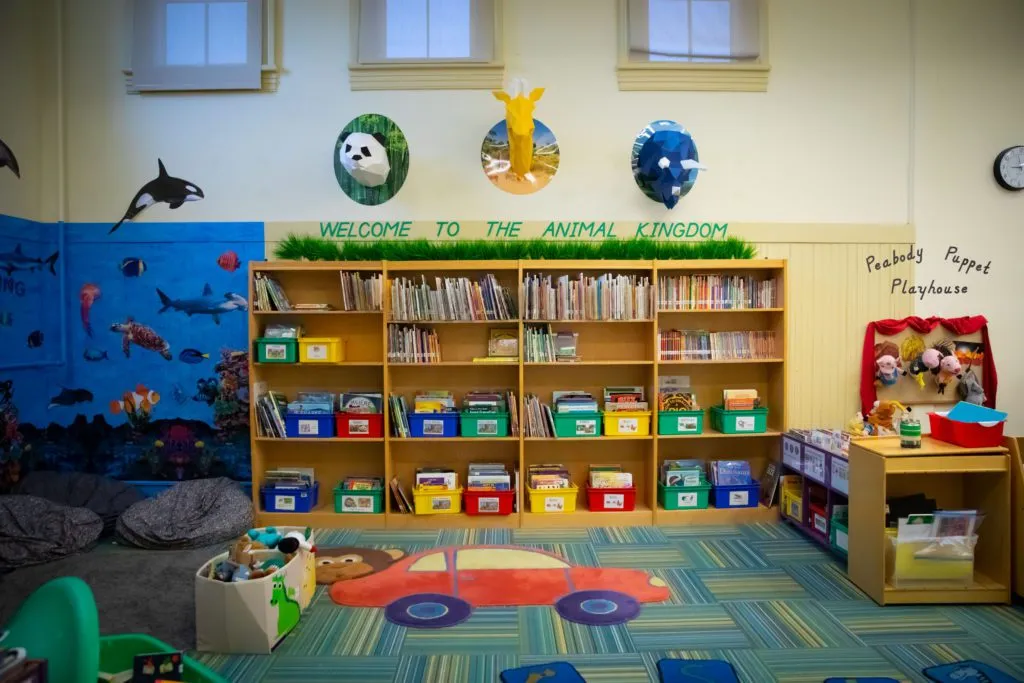
Creating Your Physical Environment
In this webinar we explore essential considerations for the wise use of space and resources.
